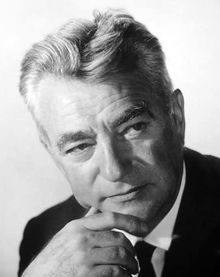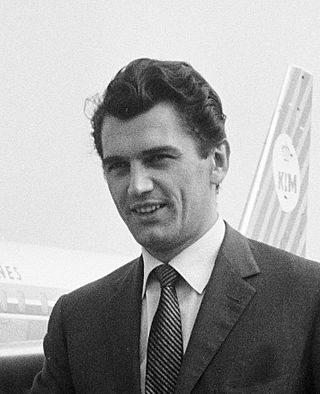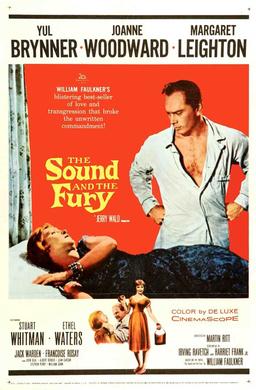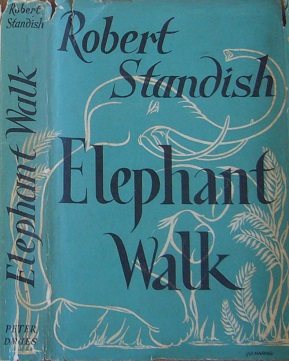
Vivien Leigh, styled as Lady Olivier after 1947, was a British actress. She won the Academy Award for Best Actress twice, for her performances as Scarlett O'Hara in Gone with the Wind (1939) and Blanche DuBois in the film version of A Streetcar Named Desire (1951), a role she had also played on stage in London's West End in 1949. She also won a Tony Award for her work in the Broadway musical version of Tovarich (1963). Although her career had periods of inactivity, in 1999 the American Film Institute ranked Leigh as the 16th-greatest female movie star of classic Hollywood cinema.

Laurence Kerr Olivier, Baron Olivier, was an English actor and director who, along with his contemporaries Ralph Richardson and John Gielgud, was one of a trio of male actors who dominated the British stage of the mid-20th century. He also worked in films throughout his career, playing more than fifty cinema roles. Late in his career he had considerable success in television roles.

Cornel Wilde was a Hungarian-American actor and filmmaker.

Frederick George Peter Ingle Finch was an English-Australian actor of theatre, film and radio.
John Lee Mahin was an American screenwriter and producer of films who was active in Hollywood from the 1930s to the 1960s. He was known as the favorite writer of Clark Gable and Victor Fleming. In the words of one profile, he had "a flair for rousing adventure material, and at the same time he wrote some of the raciest and most sophisticated sexual comedies of that period."

Charles Vidor was a Hungarian film director. Among his film successes are The Bridge (1929), The Tuttles of Tahiti (1942), The Desperadoes (1943), Cover Girl (1944), Together Again (1944), A Song to Remember (1945), Over 21 (1945), Gilda (1946), The Loves of Carmen (1948), Rhapsody (1954), Love Me or Leave Me (1955), The Swan (1956), The Joker Is Wild (1957), and A Farewell to Arms (1957).

Edmund Anthony Cutlar Purdom was an English actor, voice artist, and director. He worked first on stage in Britain, performing various works by Shakespeare, then in America on Broadway and in Hollywood, and eventually in Italy. He is perhaps best known for his starring role in 1954's historical epic The Egyptian.

British actress Vivien Leigh (1913–1967) was born in Darjeeling, India; her family returned to England when she was six years old. In addition to her British schooling, she was also educated in France, Italy and Germany, and became multilingual. Classically trained at the Royal Academy of Dramatic Art, her film debut was in an uncredited role in the 1935 comedy Things Are Looking Up.

A Yank at Oxford is a 1938 comedy-drama film directed by Jack Conway and starring Robert Taylor, Lionel Barrymore, Maureen O'Sullivan, Vivien Leigh and Edmund Gwenn. The screenplay was written by John Monk Saunders and Leon Gordon. The film was produced by MGM-British at Denham Studios.
John Paxton was an American screenwriter.
Charles Schnee was an American screenwriter and film producer. He wrote the scripts for the Westerns Red River (1948) and The Furies (1950), the social melodrama They Live by Night (1949), and the cynical Hollywood saga The Bad and the Beautiful (1952), for which he won an Academy Award.

Henry Levin began as a stage actor and director but was most notable as an American film director of over fifty feature films. His best known credits were Jolson Sings Again (1949), Journey to the Center of the Earth (1959) and Where the Boys Are (1960).

Secret of the Incas is a 1954 American adventure film directed by Jerry Hopper and starring Charlton Heston as adventurer Harry Steele, on the trail of an ancient Incan artifact. The supporting cast features Robert Young, Nicole Maurey and Thomas Mitchell, as well as a rare film appearance by Peruvian singer Yma Sumac. Shot on location at Machu Picchu in Peru, the film is often credited as the inspiration for Raiders of the Lost Ark.

The Planter's Wife is a 1952 British war drama film directed by Ken Annakin, and starring Claudette Colbert, Jack Hawkins and Anthony Steel. It is set against the backdrop of the Malayan Emergency and focuses on a rubber planter and his neighbours who are fending off a campaign of sustained attacks by Communist insurgents while also struggling to save their marriage.
Seton Ingersoll Miller was an American screenwriter and producer. During his career, he worked with film directors such as Howard Hawks and Michael Curtiz. Miller received two Oscar nominations and won once for Best Screenplay for the 1941 fantasy romantic comedy film, Here Comes Mr. Jordan, along with Sidney Buchman.

The Sound and the Fury is a 1959 American drama film directed by Martin Ritt. It is loosely based on the 1929 novel of the same title by William Faulkner.

Caribbean Gold is a 1952 American historical pirate adventure film directed by Edward Ludwig and starring John Payne, Arlene Dahl and Cedric Hardwicke. It was produced by Pine-Thomas Productions for distribution by Paramount Pictures and was based on the novel Carib Gold by Ellery Clark. The film's sets were designed by the art director Hal Pereira. It is also known by the alternative title Caribbean.

Many Rivers to Cross is a 1955 American colonial Western film shot in CinemaScope directed by Roy Rowland and starring Robert Taylor and Eleanor Parker.

Ronald "Trader" Faulkner was an Australian actor, raconteur and flamenco dancer, best known for his work in the UK on the stage and television.

Elephant Walk is a 1948 novel by Robert Standish, a pen name of the British writer Digby George Gerahty. It is set on a tea plantation in the British colony of Ceylon.
















